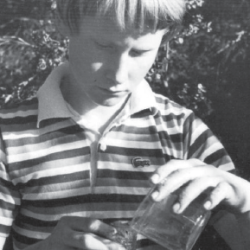Source Institutions
Source Institutions
Add to list Go to activity
Activity link broken? See if it's at the internet archive

In this outdoor activity, learners make their own organic-rich soil. Depending on where this activity is done, learners will probably discover that their local soil is low in organic matter. Then they will determine how much organic matter (compost, manure, or leaf mold) they must add to the local soil to match the organic content of a commercial soil mix. Background information discusses soil as a mixture of water, air, minerals, organic matter and living organisms, and explains more about organic matter in soil and its necessity in agriculture and gardening. The "Branching Out" section encourages learners to followup by planting seeds or seedlings of easy edible plants such as peas, beans, lettuce and Swiss chard.
- 1 to 2 hours
- 45 to 60 minutes
- $10 - $20 per group of students
- Ages 8 - 18
- Activity, Experiment/Lab Activity, Lesson/Lesson Plan
- English
Quick Guide
Materials List (per group of students)
- clear plastic vials about 1" in diameter and 2" high
- digging tools (spoons or trowels)
- cups of commercial garden mix
- cups of organic material (manure, compost, peat moss, leaf mold)
- waterproof pen
- alum powder
- paper towels
- 4 liters of water or a water source
- extra vials
- vegetable seedlings or seeds (optional)
- half-gallon milk cartons (optional)
Subjects
-
Earth and Space Science
-
Earth Structure
- Rocks and Minerals
-
Earth Structure
-
Life Sciences
-
Diversity of Life
- Plants
- Viruses and Bacteria
-
Ecology
- Ecosystems
- Human Impact
-
Diversity of Life
-
Physical Sciences
-
Chemistry
- Chemistry of Life
-
Chemistry
-
The Nature of Science
-
The Scientific Process
- Conducting Investigations
- Gathering Data
- Formulating Explanations
- Communicating Results
-
The Scientific Process
Informal Categories
- Gardening
- Nature and Environment
- Outdoor Activity
- Physical Activity
Audience
To use this activity, learners need to:
- see
- see color
- be mobile
- smell
- touch
Learning styles supported:
- Involves teamwork and communication skills
- Uses STEM to solve real-world problems
- Involves hands-on or lab activities
Other
This resource is part of:
Access Rights:
- Free access
By:
Rights:
- All rights reserved, The Regents of the University of California, 1979
